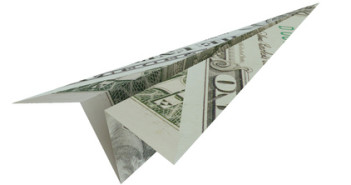- German elections over the weekend in focus for the EZ; uncertainty surrounding the make-up of the Bundestag a risk for the EUR
- Fed President’s George and Bullard to speak later today; Bullard tells Bloomberg a taper in October is not completely off the table
- Loonie weakness continues overnight; USDCAD back to pre-Fed levels
- Headline and Core CPI for Canada print as expected; absence of price pressure advocates for accommodative monetary policy
The non-taper rally from Wednesday ran out of steam yesterday, as North American indices edged lower and the DXY rebounded from post-FOMC lows. Better than expected economic numbers in the form of Existing Home Sales and the Philly Fed Index seemed to contradict the Fed’s dovish communication from their press release on Wednesday, and while only it is only a few data points taken in isolation, the upbeat numbers guided treasuries lower and forced WTI to unwind all of its post-Fed gains, trading down to just north of $106/barrel by the close.
The overnight session provided little in the way of market moving catalysts, with major bourses mixed heading into the end of the week. Bank of Japan Governor Kuroda spoke in Tokyo last night, stating that for the BoJ to hit their inflation objection, long-term expectations would have to be around 2%, not just underlying CPI. The Nikkei waffled around unchanged for most of the session before closing lower by 0.16%, while the yen continued to weaken and pushed USDJPY into the mid-99 region.
Looking across the Atlantic to Europe, Germany’s general election is set to take place this weekend, with Germans heading to the polls on Sunday to decide how the Eurozone’s largest economy is run for the next four years. While preliminary polls have Merkel’s party garnering the most votes and securing victory, the major concern for Sunday is whether or not the current coalition with the Free Democrats party can be repeated, or if Merkel’s CDU party will have to seek a grand coalition with the left-leaning Social Democrats. It seems like it will all come down to whether the Free Democrats can cobble together the 5% of votes needed to get into the Bundestag, or if the Eurosceptic Alternative for Deutschland will reap enough support to dramatically change the landscape of German politics. After a quick run-up into the mid-1.35s on larger than expected LTRO payments from Eurozone banks, the EURUSD is back into the low-1.35s, while yields on the 10 year German Bund edge higher to 1.96% ahead of the German elections. While the makeup of the Bundestag is looking like it will be too close to call, should we see continuity with the coalition of Merkel’s CDU and the Free Democrats, the easing of concerns over the potential for a fractured government should support the EUR.
Heading into the North American open, the only tier-one economic data on the docket is consumer price levels for the Canadian economy. Inflation in August was expected to slide lower on a y/o/y basis, with the headline and core readings forecasted to come in at 1.1% and 1.3% respectively. The official numbers from Stats Canada came in bang on expectations, with a slower pace of gas and shelter costs from July to August weighing on the headline reading. In Governor Poloz’s speech on Wednesday, he reiterated that monetary policy would react appropriately to keep inflation in check, so with both headline and core being well situated towards the lower end of the bank’s target band, it reinforces the notion that interest rates will remain low for some time to come. There wasn’t much reaction from USDCAD after the release as markets had situated themselves for a relatively soft inflation number, which was echoed by the Loonie weakness experienced throughout the overnight Asian session.
On that note, buying interest in the Loonie seems to have been flushed for now, with USDCAD marching higher to work itself towards levels the pair was trading at before the “taper-off†rally. The ability for the pair to close above the 200 day moving average for two consecutive trading days bodes well for USD longs, while the piercing candlestick pattern developing after yesterday’s price action suggests the Loonie bulls might be getting close to exhaustion. If USDCAD can vault itself above 1.0300, the September 11th high and the 50% fib retracement around the 1.0370 level will quickly come into focus.
As we make our way into the end of the week, a few FOMC members are set to take the podium and speak their piece on the American economy and the current direction of monetary policy. Given that the market is still continuing to digest the surprise from Wednesday, the commentary from the Fed speakers could provide some additional colour into the respective members thoughts on the decision making process. That being said, the monetary policy slant of the speakers has been relatively well documented, so unless we see Esther George migrate away from her hawkish viewpoints (unlikely as George dissented on Wednesday’s vote), or James Bullard become less nervous about the recovery, the Fed-speak will most likely offset each other. Bullard had an interview with Bloomberg TV this morning, where he suggested that a taper in October is not entirely out of the question, as there is nothing stopping the Fed from holding an additional press conference (outside of the normal four press conference) should the taper announcement fall on a meeting that doesn’t traditionally come with a press conference. The slight hawkish slant sent stock futures lower, however they still remain close to unchanged before the opening bell in North America.
Further reading:Â Impending deadlock in Congress spells trouble for the market



